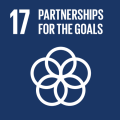One Health (OH) is a collaborative, multisectoral, and transdisciplinary approach — working at the local, regional, national, and global levels — which aims to achieve optimal health outcomes. It recognises that people, animals, and the environment in which they exist are interconnected and that solutions to global challenges, including diseases and emerging pandemics, demand a holistic and interdisciplinary approach. Most infectious diseases are spread to humans from wild or domestic animals. As such, local, regional, national, and international collaborations across disciplines are needed to find solutions within our complex ecosystem.
The One Health Global Network promotes a collaborative multidisciplinary and cross-sectoral approach to address potential and existing risks that originate at the animal-human-environment interface and brings together a broad range of stakeholders to respond to and control local outbreaks, regional epidemics, and global pandemics.
The Manhattan Principles
In the 21st century, the emergence of several acute respiratory diseases, including SARS, MERS, influenzas, and most recently COVID-19, has shown the importance of global cooperation as defined by the ‘Manhattan Principles’, a product organised by the ‘One World, One Health’ event in 2008, which lists 12 recommendations to establish a more holistic approach to prevent epidemic disease and maintain ecosystem integrity for the benefit of humans, domesticated animals, and biodiversity. This product recognises the intimate link between human and animal health and the threat of disease to food security and economies. OH approaches are appealing to address these societal challenges. This includes mitigating risks to humans from pathogens (often viruses) that can make the species jump to humans by working with communities to preserve and protect wildlife, and mitigating risks arising from the misuse and overuse of antibiotics in humans and animals that has led to the emergence of antimicrobial resistance.
New emerging infectious diseases arising from animals are joining the growing list of tropical diseases, such as Ebola, malaria, Japanese encephalitis, and dengue fever, which kill millions of people each year. A combined effort from medical, public health, social, and basic and environmental scientists will lead to sustainable mitigation strategies. However, support for the concept from human medical professionals continues to be poor, especially in low and middle income countries. Possible reasons for this include underfunding for public health initiatives to prevent disease outbreaks, differences in medical language between veterinarians and medical doctors, and a lack of visibility of OH approaches.
A major public health risk in Uganda
I undertake clinical veterinary practice in large and small animal medicine in Uganda and have experience of working on zoonosis including Brucellosis (caused by ingestion of unpasteurised milk or undercooked meat from infected animals), Rift Valley Fever (RVF), Marburg, and now COVID-19 with both local and international institutions.
Uganda has a 31.8% prevalence of Brucellosis, a bacterial infection that spreads from animals to people, with 55% prevalence in cattle herds and 43% in small ruminants (herbivorous animals with four-part stomachs). This poses a major public health risk, as many Ugandans rely on livestock for their livelihoods. The prevalence of RVF in animals and humans is between 12-13%, although a prevalence of 24% in Ugandan livestock shows that it continues to infect humans, with a case fatality of 44%. These diseases not only cause death and disrupt livelihoods in affected communities but can also disrupt livestock production with fatal consequences.

Supporting local communities
I have been involved in several community disease campaigns and interventions based on the OH concept in the Ibanda district in the western region of Uganda. This has entailed working in collaboration with colleagues from the Ministry of Health, Ministry of Agriculture Animal Industry and Fisheries, and local government administrators to minimise community transmission of these infections.
A key responsibility of mine includes supporting local communities. This includes educating members on the threat of diseases and conducting community surveillance activities. I am involved in collecting animal samples for laboratory diagnosis of infections and prepare farmer feedback reports and monthly and quarterly reports to the Ministry to advise policy on animal health in the district. I am also responsible for making veterinary prescriptions, treatments, and spearheading disease control activities, including routine surveillance and periodic enforcement of quarantine measures to prevent the spread of diseases. Furthermore, I conduct community training to increase the farmers’ knowledge on disease to improve community vigilance and compliance to help control and prevent spread of infections in the villages.
Experiencing OH through my work with the Ibanda district local government has informed me how effective and cost-effective multidisciplinary collaborations can be. Working with medical officers, community leaders, community development officers, and local leaders during RVF, Brucellosis, Marburg, rabies, and most recently COVID-19 community campaigns has helped reduce duplication of limited resources and helped maximise utilisation of human resources in resource-limited settings. Since gaining my MSc in International Animal Health, I have advanced my interests in OH research and participated in chemical hazard training, an opportunity which brought me in close collaboration with food scientists, toxicologists, pharmacists, social scientists, politicians, and environmental specialists. This has been of great importance due to the low availability of scientific studies on food safety from many African countries to date.
COVID-19 in Uganda
Currently, I am leading multidisciplinary collaborations and community surveillance activities on COVID-19 in Uganda. Together with partners under the Welburn research group at the College of Medicine and Veterinary Medicine (University of Edinburgh), and Professor Kevin Bardosh at the Center for One Health Research, School of Public Health (University of Washington), we are assessing the impacts of COVID-19 amongst livestock communities in eastern and western Uganda and the availability of household food for consumption. Community surveys on knowledge, attitudes, and practices amongst Ugandans have been conducted and we have assessed the role of academicians in the control of COVID-19. This approach has helped us work closely with professionals from a range of disciplines within the Ministry of Health in Uganda to generate basic information to guide policy. Currently, we are running a study to identify potential challenges associated with COVID-19 clinical trials amongst Ugandans following rising discord between policymakers and scientists.
Our multidisciplinary team has adapted to working remotely, communicating via online platforms due to social distancing restrictions, but ironically this has bought us closer together. My personal interests in OH and infectious disease have strengthened my desire to work with multidisciplinary teams, and I believe interdisciplinarity will continue to play a crucial role in the fight against the global pandemic.




![Keneth_Iceland_Kasozi_headshot[1] Headshot of Keneth Iceland Kasozi](https://cscuk.fcdo.gov.uk/wp-content/uploads/2021/02/Keneth_Iceland_Kasozi_headshot1.jpg)
